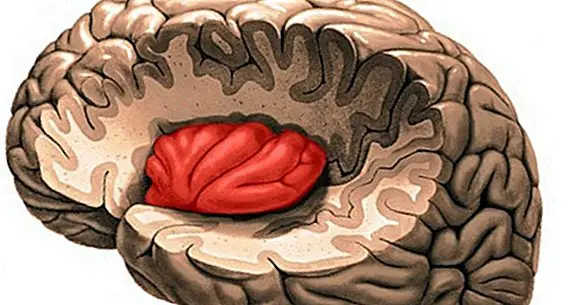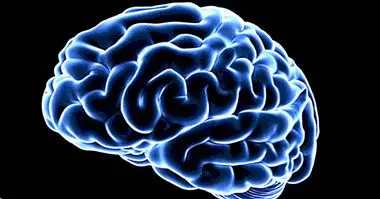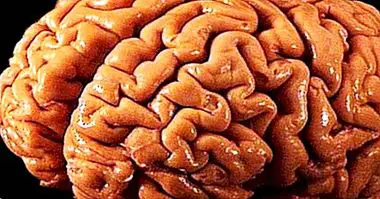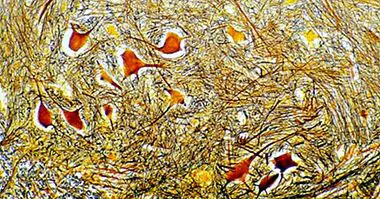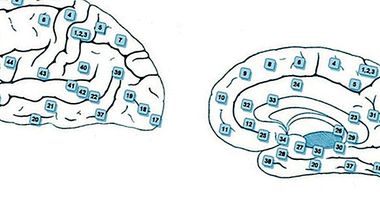The insula: anatomy and functions of this part of the brain
At this point it is already known by the vast majority of the population that the human brain is divided into four cerebral lobes.
With a simple image of the brain we would be able to locate a large number of parts of the brain. However, there is a very relevant structure that can remain hidden from visual observation, taking into account that it is located at a certain depth behind one of the main grooves of the brain. This structure is the so-called insula.
What is the insula?
Also considered as the fifth cerebral lobe, the insula is a structure of the cerebral cortex located in the depth of the Sylvian fissure, at the point where the temporal, parietal and frontal lobes converge, being delimited by their respective opercula.
The insula is part of the mesocortex, or paralimbic system, together with the orbitofrontal and other structures. It is a connection center between the limbic system and the neocortex, participating in many different functions, either directly or indirectly.
Components of the insula
The insula is not only a uniform structure that performs homogeneously the same functions, but also different parts of this structure are responsible for various tasks . Specifically, the insula is divided into anterior and posterior insula, separated both parts by the central insular groove.
The posterior region of the insula is mainly innervated with somatosensory neurons, which are what create a "map" of the position sensations related to the different parts of the body. with which the participation of this region will be linked more with control of the viscera and internal organs.
The anterior part of this brain structure has a greater connection with the limbic system, its functionality being more oriented to the emotional integration of experiences and perceptions as a unitary and global sensation.
Main functions of the insula
Let's see some of the main functions of the insular region.
As we have seen, the insula influences a large number of basic and superior processes (related to abstract thinking and decision making), and is an element of great importance for the proper functioning and even the survival of the organism. In this sense, the research carried out in the field of neurosciences shows that the island participates in the following processes .
1. Perception of taste and smell
The sense of taste has its primary primary sensory area at the lower end of the insula and in the parietal cortex. It is at this point where the taste information becomes conscious, appearing as a private and subjective experience but related to the elements of the environment that we savor.
It has also been observed that the insula participates in the perception of smell, although this sense tends to have a neural network dispersed throughout the encephalon.
2. Visceral control and somatoperception
The insula also has an important role in the regulation of viscera and organs . Specifically, it has been observed that its experimental manipulation produces important variations in blood pressure and heart rate. It also participates in the sensations coming from the digestive system, also participating in the management of this system and the respiratory system.
3. Vestibular function
The vestibular function, which refers to the body's balance and the control of the body in relation to space, also presents afferences to the insular region, being a relevant nucleus in its conscious perception. Thus, thanks to the insula a healthy person is able to know what position each of the main parts of his body occupies at all times.
4. Integration of emotional and perceptive information
The insula, as mentioned before, acts as an association zone between very different observations , especially in regard to the association between perception and emotion.
So, thanks in part to this brain region we learn from our experiences, since we link pleasant or unpleasant subjective sensations to what we do and say and, in this way, we associate behaviors with consequences through what we perceive.
5. Involvement in addictions: craving and craving
Due to its relationship and its connections with the limbic system, the link of the insula with the cerebral reward system has been explored. Research has shown that this structure intervenes in the processes of addiction to certain drugs, contributing to maintain the addictive behavior.
This relationship is due to the involvement of the insular region with the integration between emotion and cognition , being especially involved in the phenomenon of craving or intense desire for consumption.
6. Empathy and emotional recognition
Earlier we have seen that the insula has great connections with the limbic system. In this regard, recent investigations have indicated that this region of the cerebral cortex presents a key role in the ability to recognize emotions and of empathy. Thus, it has been shown that those individuals without insula have much less recognition, especially in regard to emotions of joy and surprise, as well as pain.
In fact, it has been suggested that the deficits found are very similar to some cases of autism, borderline personality disorder and behavioral problems, which could lead to investigations regarding the functioning of this brain area in certain disorders.
Bibliographic references:
- Allen, G.V .; Saper, C.B .; Hurley, K.M. & Cechetto, D.F. (1991). Localization of visceral and limbic connections in the insular cortex of the rat. J Comp Neurol; 311: 1-16
- Craig, A.D .; Reiman, E.M .; Evans, A. & Bushnell, M.C. (nineteen ninety six). Functional imaging of an illusion of pain. Nature; 384: 258-260
- Duque, J.E .; Hernán, O. and Devia, A. (2004). The insular lobe. A lobe of visceral cortical processing. Acta Neurol. Colom. Vol 20, 2
- Guenot, M .; Isnard, J. & Sindou, M. (2004) Surgical anatomy of the insula. Adv Tech Stand Neurosurg; 29: 265-288
- Guyton, A. C. and Hall, J. E. (2008): Treatise on Medical Physiology (11th ed.). Madrid, Elsevier.
- Kandel, E.R .; Schwartz, J.H .; Jessell, T.M. (2001). Principles of Neuroscience. Madrird: MacGrawHill
- Kivity, S .; Ortega-Hernández, O.D. & Shoenfeld, Y. (2009). Olfaction a window to the mind. Isr Med Assoc J; 11: 238-43
- Kolb, B. & Wishaw, I. (2006). Human neuropsychology Madrid: Panamericana Medical Publishing House
- Manes, F. and Niro, M. (2014). Use the brain Buenos Aires: Planet.
- Netter, F. (1989). Nervous system. Anatomy and physiology Volume 1.1. Barcelona: Salvat
- Ostrowsky, K .; Isnard, J .; Ryvlin, P .; Guénot, M .; Fischer, C. & Mauguière, F. (2000). Functional Mapping of the insular cortex: clinical implication in temporal lobe epilepsy. Epilepsy; 41: 681-6
- Pedrosa-Sánchez, M .; Escosa-Bagé, M .; García-Navarrete, E. and Sola, R.G. (2003). Reil insula and drug-resistant epilepsy. Rev. Neurol .; 36 (1): 40-44
- Snell, R.S. (1999). Clinical Neuroanatomy. Buenos Aires: Editorial Medica Panamericana, S.A: 267.
- Türe, U .; Yasargil, D.C.H .; Al-Mefty, O. & Yasargil, M.G. (1999). Topographic anatomy of the insular region. J Neurosurg; 90: 720-33.
- Varnavas, G.G. & Grand, W. (1999). The insular cortex: morphological and vascular anatomic characteristics. Neurosurgery; 44: 127-38

